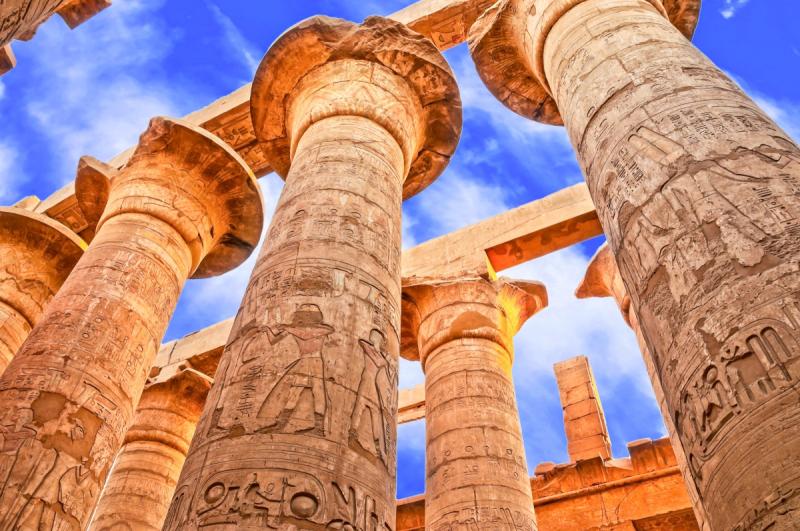
The Historical Sites of Luxor
Thebes, Egypt
Once the thriving capital of the ancient kingdom, Thebes has transitioned into a modest town and is the home of Egypt’s rich ancient historical heritage. As the Nile carves the city neatly in half, a short boat ride across its gentle currents takes you from one era of Egyptian history into another. Generally, the East Bank is the where the modern town is built and the majority of the hotels and housing is located; from there, the view westwards across the Nile reveals the ruins of Thebes. That said, some incredible structures do still stand in the east of the town and The Luxury Travel Guide provides a breakdown of the sights that should not be missed.
Karnak
While most day-trippers coming from the beaches at Hurghada will make a beeline for the sights in the west, stopping off here before crossing the Nile is well worth doing so. Entering down a smooth path flanked by carved figures, you will find not a single large temple but several, all set among gorgeously-preserved, intricate masonry and hieroglyphs. While scorching hot in the day, the formidable Temple of Amun-Ra offers plenty of shade. The most curious feature of the complex is a great metallic scarab mounted on a plaque, where you’ll undoubtedly find a flock of tourists walking counter-clockwise around it for good luck.
Valley of the Kings
This site needs no introduction, but it must be seen to be believed. It is hard to do justice to the dramatic sights in the landscape; you will be gazing up at the jagged peaks as often as you will peer down into the tombs. While 60 tombs have been unearthed to date, there are likely to be many more, owing to the site’s use over 500 years and the tragically short-lived nature of the Egyptian pharaohs. Of the tombs themselves, Tutankhamen’s tomb might be the most popularly celebrated, but it is dwarfed by the fully-decorated tomb of Sety I.
Memorial Temple of Hatshepsut
Certain local guides might make you remember her name with the phrase ‘Hot Chicken Soup’; but even if you forget the correct pronunciation, you’ll certainly be taking lasting memories of her temple. Set beneath 300-metre-tall limestone cliffs, the site is designed to evoke Hatshepsut’s divine birth, making it among the most stunning temples outside of Giza; and yet it is one of Egypt’s most overlooked treasures. Careful reconstruction has corrected the millennia of abuse, beginning with the tomb of her step-son Tuthmosis III, whose temple is also contained here. Today, up a gentle yet enormous causeway, the upper terrace offers an unexpectedly stunning view.
Medinat Habu
This outstanding memorial has a humble place among the countless sights on the West Bank. It marks the first site devoted to Amun, ‘King of the Gods’. In the soft light of the afternoon, this makes a perfect conclusion to anyone’s day. Additions and alterations have been made by dynasties from Ramses III, who died in 1156 BC, to the Ptolemaic rulers after the death of Alexander in 323 BC. Today, the facades bear the story of over 3,000 years of Egyptian history – the front of the temple depicts the extensive wars between Egyptians and Hittites (modern-day Turkey and Syria).
Share this article:



















